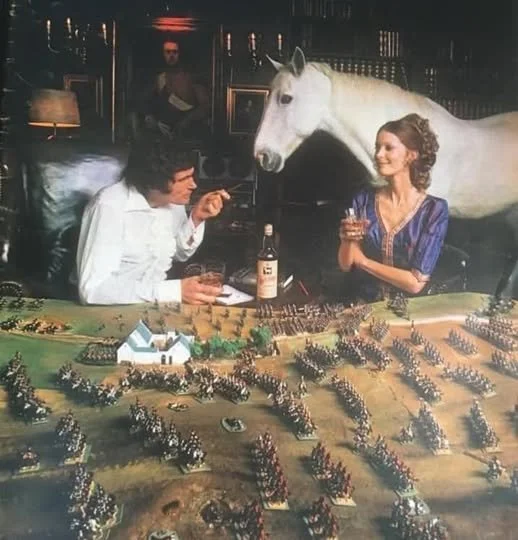Two More Games of TTS
/It’s back to the living room for another couple of games of To The Strongest against K.: daughter #1’s boyfriend, trapped with us for the duration of lockdown. K. is becoming a seasoned wargamer now: into double figures with battles over the lockdown period and, as we began our games, victor in three out of our last four encounters.
“How is your Sarmatian coming along?”
In fact, so veteran is he that for this game, rather than just saying that he didn’t mind which army he played, K. very emphatically said that he’s like to play the Sarmatians again: the army he’d had so much success with last time. That was fine by me: I proxie my Sassanid Persians as Sarmatians, with the cataphracts representing veteran Sarmations and the Clibinarii standing in for the regular chaps.
A solid wall of lancers!
I, on the other hand, would take my beloved Ancient Britons, now quite a different army since the list changed the chariot force from being lights to being normal troops…it was time for the Ancient British Panzer Division to take to the field once more!
Four of my six warbands
I did still have some lights, javelin-armed horsemen and slingers, and was determined to try and use them as well as some of my other opponents i.e. manoeuvring around the battlefield like Billy Whiz, constantly nipping at flanks and rear.
“Come and have a go if you think you’re hard enough!”
Our first game was the sort of grinding encounter that typicalises battles where one or both sides are full of deep units. I couldn’t kill his veteran lancers, he was having difficulty breaking my deep warbands. I did manage to get my light horse attacking the flanks and rear of various Sarmatian units, but to no effect whatsoever!
The Ancient Britons head for the rough ground
Chariots kept back as a mobile reserve/exploitation force
In the end, however, it was lights that won the day for me. A unit of light infantry slingers found themselves out of ammunition and in the middle of the battlefield. They spent a bit of time desperately trying not to be noticed by the Sarmatians, a tactic that succeeded to the extent that one lancer unit, already disordered, strayed within flank charge range. In went the slingers and KO’d the Sarmatian cavalry. This left them a few squares from the rear of another Sarmatian cavalry unit. Their blood was obviously up, as a couple of high activation cards allowed me to charge them as well…and then take them out, relieving K. of the last of his victory coins. The slingers had won the day!
Game 2
As the distaff side of things had taken the evil pooch (squatter in my wargames room!) out for a walk, we swapped sides for a second battle.
One thing I noticed immediately was what a lot of Ancient Britons there were: ‘fousands of them to be inexact!
From the other side: there are an awful lot of hairy-arsed barbarians to kill!
This turned out, however, not to matter at all, as the game ended up being very much a walkover in my favour. The Ancient Brits came on in a slightly crooked line, which allowed me to target individual units with my bow fire. This was, as usual, quite ineffectual, but the odd Disorders I did achieve gave me an extra advantage in the melees that followed.
I did have a scare early on when one of my non-Veteran brigade generals was killed by a slingshot, but, once battle was joined in the centre, my veteran units killed the warbands in front of them, punching a huge hole in the British line.
The British line begins to crumble
Not only did this cost K. a lot of victory coins, but it also left the way open to his camp: worth another three coins. In the end, however, I didn’t even need that: I had kept my left and right flanks back whilst my centre went in, now I sent them forward as well, aiming all the time at his weaker units. This tactic proved successful, and suddenly K. had no coins left. Looking at the tabletop, we both realised that I hadn’t actually lost a unit: just one very unfortunate general. Total victory was mine.
Big Hole in the middle of the Ancient British line
Aftermath
A great afternoon’s gaming, and a chance for me to pull two games back against K. Tomorrow is Father’s Day, so I’ve booked another couple of games for then, but more on that in a future post…
Robert Avery










